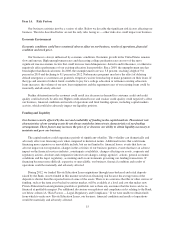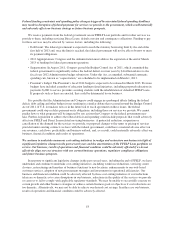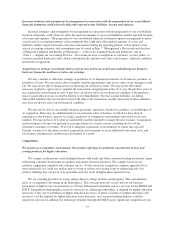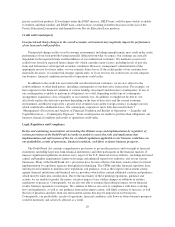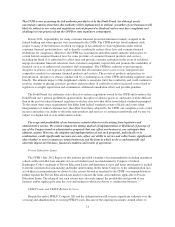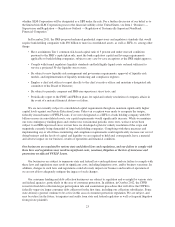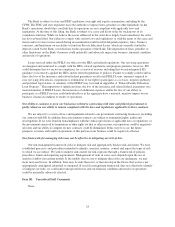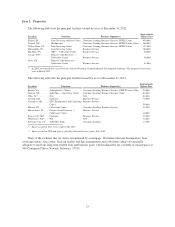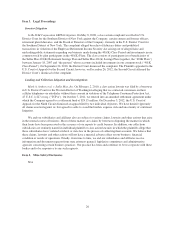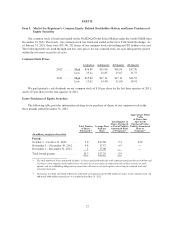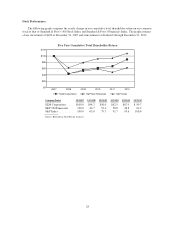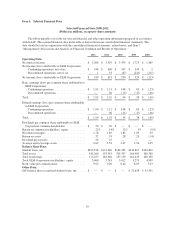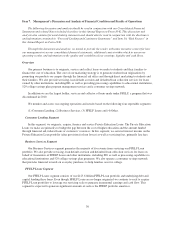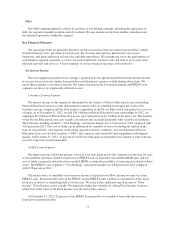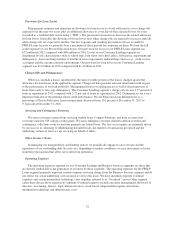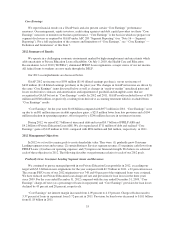Sallie Mae 2012 Annual Report Download - page 25
Download and view the complete annual report
Please find page 25 of the 2012 Sallie Mae annual report below. You can navigate through the pages in the report by either clicking on the pages listed below, or by using the keyword search tool below to find specific information within the annual report.whether SLM Corporation will be designated as a SIFI under the rule. For a further discussion of our belief as to
the limited risk SLM Corporation poses to the financial stability of the United States, see Item 1 “Business —
Supervision and Regulation — Regulatory Outlook — Regulation of Systemically Important Non-Bank
Financial Companies.”
In December 2011, the FRB proposed enhanced prudential supervisory and regulatory standards that would
require bank holding companies with $50 billion or more in consolidated assets, as well as SIFIs, to, among other
things:
• Have a minimum Tier 1 common risk-based capital ratio of 5 percent and under stressed conditions
pursuant to the FRB’s capital plan rule, meet the bank regulatory capital and leverage requirements
applicable to bank holding companies, subject to any case-by-case exceptions as the FRB might approve;
• Comply with formal regulatory liquidity standards and hold highly liquid assets on hand sufficient to
survive a projected 30-day liquidity stress event;
• Be subject to new liquidity risk management and governance requirements, approval of liquidity risk
models, and implementation of liquidity monitoring and compliance regimes;
• Employ a chief risk officer to report directly to the chief executive officer and maintain a designated risk
committee of the Board of Directors;
• Be subject to periodic company and FRB-run supervisory stress tests; and
• Periodically report to the FDIC and FRB on plans for rapid and orderly resolution of company affairs in
the event of a material financial distress or failure.
We are not currently subject to consolidated capital requirements though we maintain significantly higher
capital levels against our Private Education Loans. Unless an exception were made to recognize the unique,
federally insured nature of FFELP Loans, if we were designated as a SIFI or a bank holding company with $50
billion or more in consolidated assets, our capital requirements would significantly increase. While we maintain
our own contingency funding plans and conduct our own internal periodic stress tests, we have never been
subject to an FRB supervised stress test nor have we developed a plan for orderly resolution of the scope and
magnitude currently being demanded of large bank holding companies. Complying with these measures and
implementing any or all of these monitoring and compliance requirements could significantly increase our cost of
doing business and the levels of capital and liquidity we are required to hold and, consequently, have a material
and adverse impact on our business, results of operations and financial condition.
Our businesses are regulated by various state and federal laws and regulations, and our failure to comply with
these laws and regulations may result in significant costs, sanctions, litigation or the loss of insurance and
guarantees on affected FFELP Loans.
Our businesses are subject to numerous state and federal laws and regulations and our failure to comply with
these laws and regulations may result in significant costs, including litigation costs, and/or business sanctions. In
addition, changes to such laws and regulations could adversely impact our business and results of operations if
we are not able to adequately mitigate the impact of such changes.
Our consumer lending and debt collection businesses are subject to regulation and oversight by various state
and federal agencies, particularly in the area of consumer protection. In addition, in October 2012, the CFPB
issued its final debt collection larger participation rule and examination procedures that will allow the CFPB to
federally supervise larger consumer debt collectors for the first time, including our collection subsidiaries. Some
state attorneys general continue to be active in this area of consumer protection regulation. We are subject, and
may be subject in the future, to inquiries and audits from state and federal regulators as well as frequent litigation
from private plaintiffs.
23




